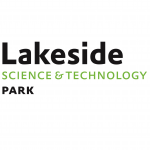VCIP 2021
Sunday, December 5, 2021
https://www.vcip2021.org/call-for-tutorials/

Lectures:
- Christian Timmerer, AAU, AT
- Tobias Hoßfeld, Univ. Würzburg, DE
- Raimund Schatz, AIT, AT
Abstract: Universal access to and provisioning of multimedia content is now a reality. It is easy to generate, distribute, share, and consume any multimedia content, anywhere, anytime, on any device thanks to a plethora of applications and services that are now commodities in our daily life. Interestingly, most of these services adopt a streaming paradigm, are typically deployed over the open, unmanaged Internet, and account for most of today’s Internet traffic. Currently, the global video traffic is greater than 60 percent of all Internet traffic and it is expected that this share will grow to more than 80 percent in the near future (according to Sandvine and Cisco VNI). Additionally, Nielsen’s Law of Internet bandwidth states that the users’ bandwidth grows by 50 percent per year, which roughly fits data from 1983 to 2019. Thus, the users’ bandwidth can be expected to reach approximately 1 Gbps by 2022. At the same time, network applications will grow and utilize the bandwidth provided, just like programs and their data expand to fill the memory available in a computer system. Most of the available bandwidth today is consumed by video applications and the amount of data is further increasing due to already established and emerging applications, e.g., ultra-high definition, high dynamic range, or virtual, augmented, mixed realities, or immersive media applications in general with the aim to increase the Immersive Media Experience (IMEx).
A major technical breakthrough was the adaptive streaming over HTTP resulting in the standardization of MPEG Dynamic Adaptive Streaming over HTTP (DASH), which enables a content-/format-agnostic delivery over-the-top (OTT) of the existing infrastructure. Thus, this tutorial takes DASH as a basis and explains how it is adopted for immersive media delivery such as omnidirectional/360-degree video and any other volumetric video representations (i.e., point clouds, light fields, holography). The focus of this tutorial is related to the principles of Quality of Experience (QoE) for such immersive media applications and services including its assessment and management. Finally, this tutorial concludes with open research issues and industry efforts in this domain.







